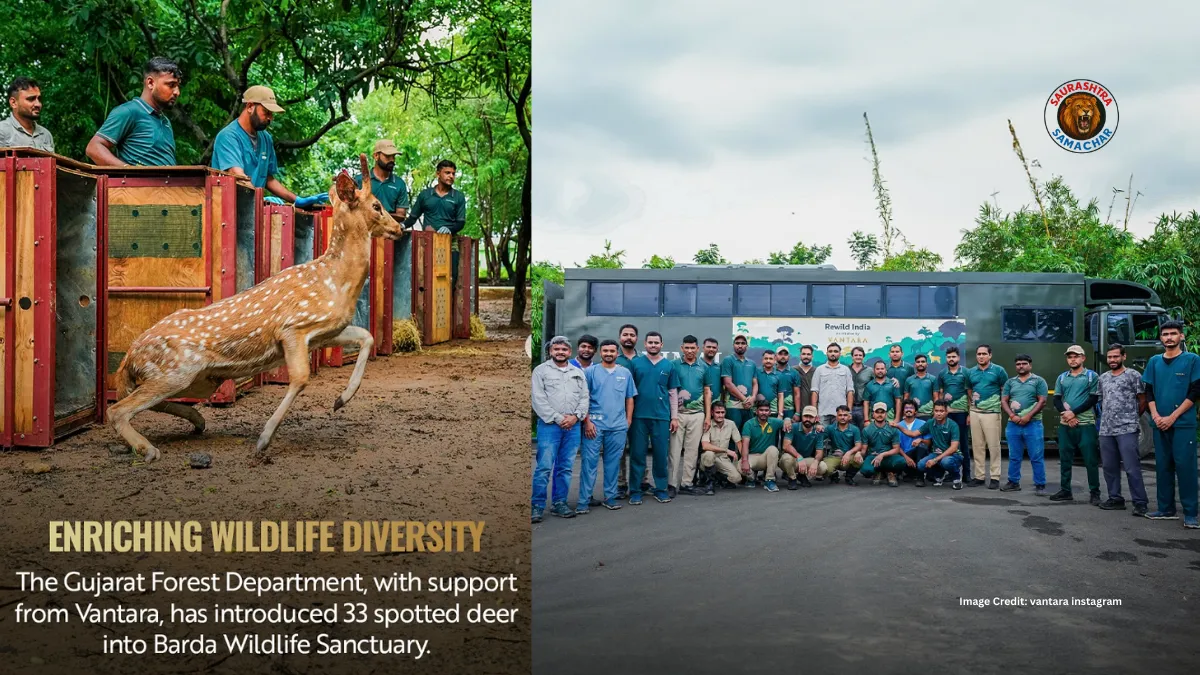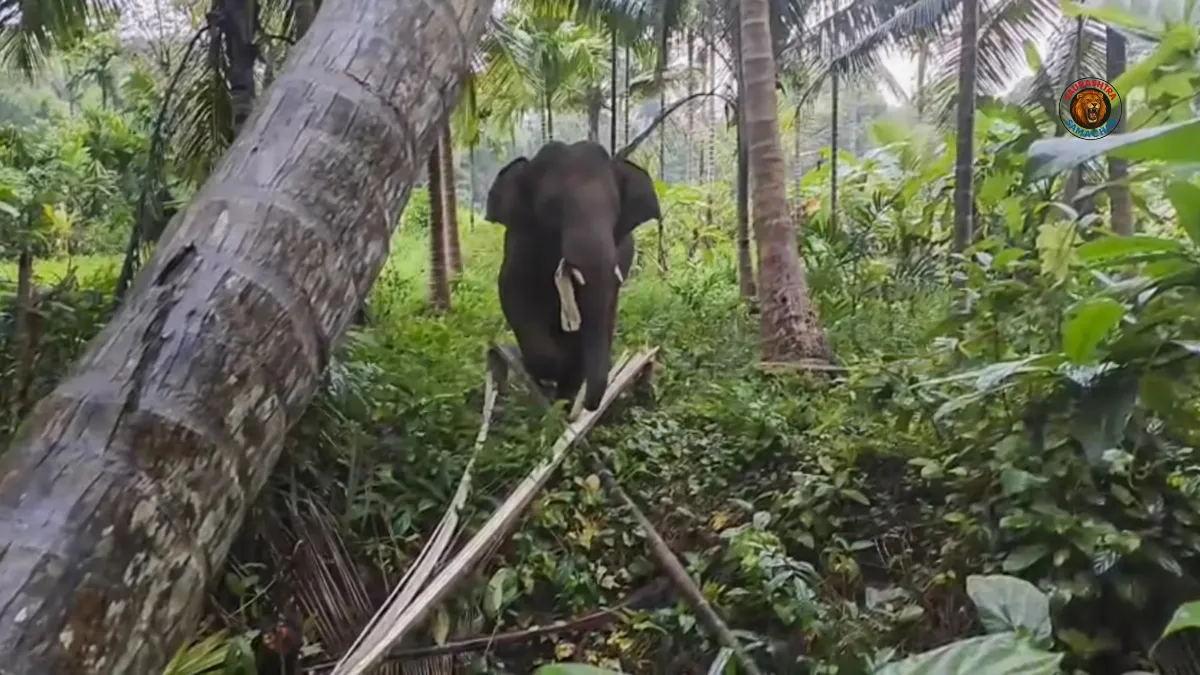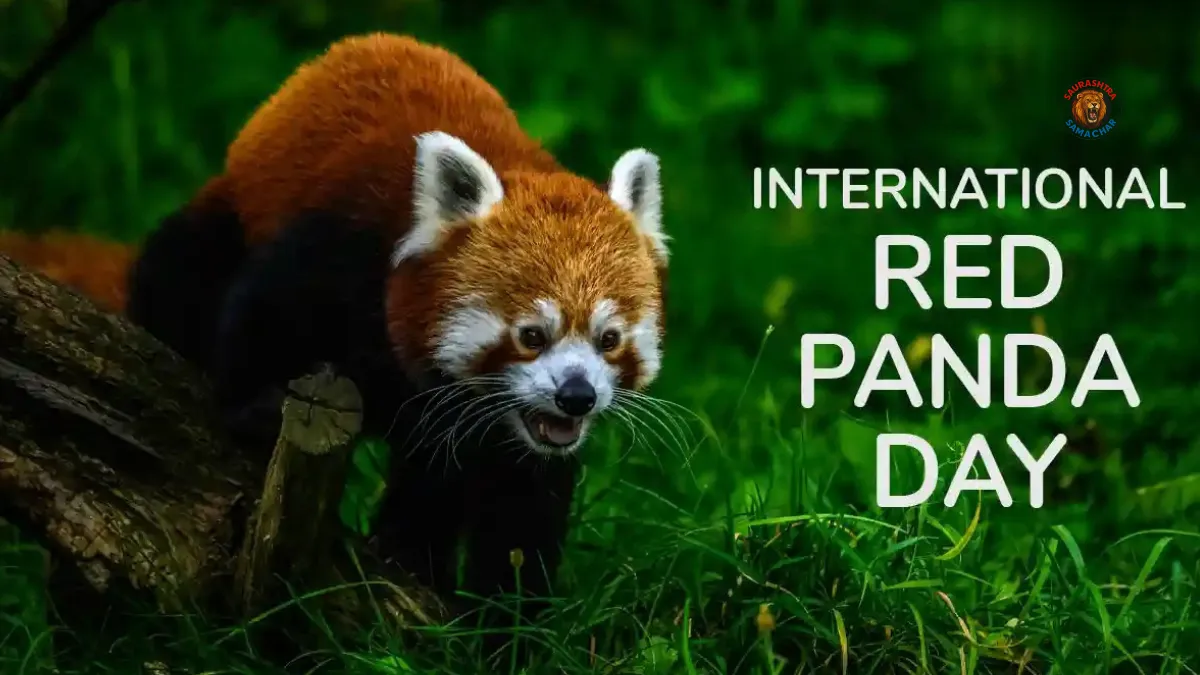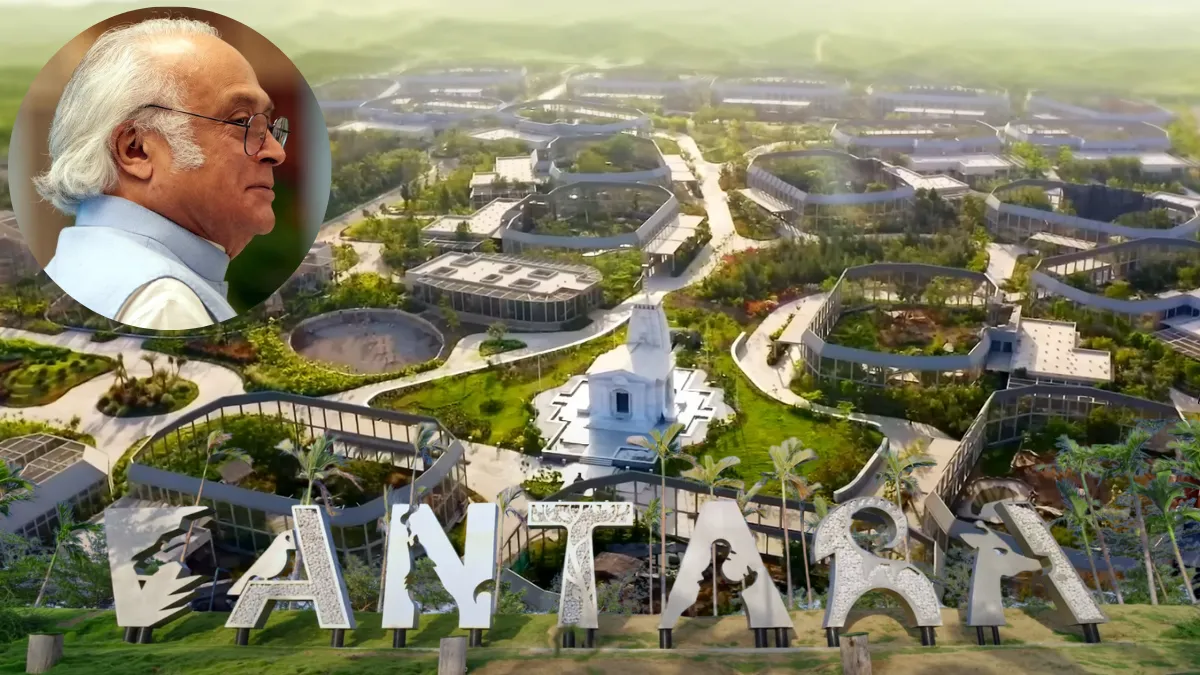Introduction
Wildlife conservation in India has taken a significant leap forward with the reintroduction of 33 spotted deer (Axis axis) into the Barda Wildlife Sanctuary in Gujarat. The project is a joint effort of the Gujarat Forest Department and Vantara, the conservation initiative led by Anant Ambani, under whose vision the Greens Zoological, Rescue and Rehabilitation Centre operates in Jamnagar.
This milestone not only restores the presence of chital in their historical range but also strengthens the sanctuary’s ecosystem, biodiversity, and long-term ecological health.
The Translocation Process
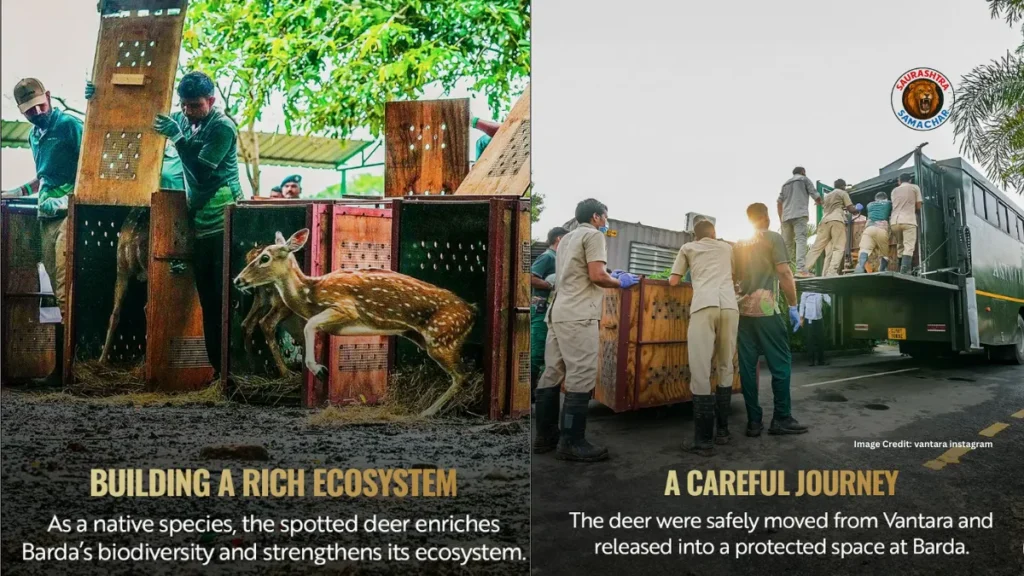
The spotted deer were carefully moved from Vantara’s advanced ex-situ conservation facility in Jamnagar. To ensure safety, the animals were transported in specially designed ambulances equipped for wildlife relocation.
Once the sanctuary’s conditions—such as habitat readiness, food availability, and ecological balance—were confirmed, the deer were released under the watchful eye of the Forest Department.
Vantara contributed significantly by offering technical know-how, veterinary expertise, and logistical support to ensure the translocation was smooth, ethical, and scientifically guided.
Expert Opinion
Dr. Brij Kishor Gupta, Director of the Greens Zoological, Rescue and Rehabilitation Centre, highlighted the ecological importance of this step:
“The return of spotted deer to Barda marks an essential stride toward ecological restoration. These animals are part of the sanctuary’s original landscape, and bringing them back is crucial for biodiversity revival.”
He further explained that the initiative is an excellent example of how government agencies and private organizations can work together to deliver measurable outcomes in conservation.
Barda Wildlife Sanctuary: A Haven of Biodiversity
Spread across 192.31 square kilometers in Gujarat’s Porbandar district, Barda Wildlife Sanctuary is recognized for its biological richness. The sanctuary’s landscape is a mix of:
- Grasslands
- Dry deciduous forests
- Scrublands
- Riverine areas
Inhabitants of Barda
Barda is home to an impressive range of wildlife:
- Predators: Leopards, hyenas, wolves, and jackals
- Herbivores: Blue bulls (nilgai), wild boars, and the newly reintroduced spotted deer
- Birds: Rare raptors such as the spotted eagle and crested hawk-eagle
Historically, species like sambar, chital, and chinkara thrived here, but their numbers declined due to habitat fragmentation and ecological pressures. Reintroducing deer helps restore balance to the sanctuary.
Why Spotted Deer Matter
Spotted deer, beyond their graceful appearance, play a vital ecological role:
- Maintaining predator-prey balance: They provide food for carnivores like leopards and hyenas.
- Seed dispersal: Their movement aids in natural forest regeneration.
- Habitat maintenance: By grazing, they prevent overgrowth of vegetation, which benefits other animals.
Their presence ensures that the ecosystem functions smoothly, benefiting multiple species.
Vantara’s Role in Indian Conservation
Launched by Anant Ambani, Vantara has emerged as a leader in conservation and animal welfare. Its state-of-the-art facility in Jamnagar specializes in:
- Wildlife rescue and rehabilitation
- Veterinary care with modern technology
- Ex-situ breeding of endangered species
- Research and ecological studies
In this project, Vantara’s scientific expertise and infrastructure proved essential in making the reintroduction successful.
Government Commitment to Conservation
The Gujarat Forest Department has consistently taken proactive measures to strengthen the state’s biodiversity. From protecting the iconic Asiatic lions in Gir to reviving sanctuaries like Barda, Gujarat has positioned itself as a leader in wildlife management.
The department ensures:
- Thorough ecological assessments before species release
- Strengthening anti-poaching measures
- Promoting eco-tourism in a sustainable way
- Engaging communities in conservation programs
The Barda project is another milestone in this ongoing journey.
Broader National and Global Impact
India’s wildlife conservation is guided by both national policies and international commitments, such as:
- National Biodiversity Action Plan (NBAP)
- Convention on Biological Diversity (CBD)
- UN Decade on Ecosystem Restoration
The Barda initiative demonstrates how India is fulfilling its promise to restore biodiversity and safeguard threatened species.
Also read: क्या वंतारा में जनता को अनुमति है? पूरी जानकारी और मार्गदर्शन
Community Benefits and Eco-Tourism Potential
The project is not limited to ecological gains—it also has socio-economic benefits:
- Tourism boost: A richer sanctuary ecosystem attracts nature enthusiasts and photographers.
- Job opportunities: Locals gain employment in eco-tourism, guiding, and hospitality.
- Education: Communities learn the value of conservation, encouraging them to protect nature.
When people experience tangible benefits, they become partners in conservation rather than bystanders.
A Model for the Future
The successful partnership between Vantara and Gujarat Forest Department demonstrates how public-private collaborations can transform conservation landscapes in India. This model can inspire similar reintroductions across other protected areas, restoring species that have declined or disappeared due to human pressures.
Also read: Vantara Hosts Flagship Veterinary Training on Conservation Medicine in Jamnagar
Conclusion
The reintroduction of 33 spotted deer into Barda Wildlife Sanctuary is more than a conservation story—it is a blueprint for the future of wildlife protection in India.
By combining the scientific expertise of Vantara with the strategic vision of the Gujarat Forest Department, this initiative restores biodiversity, supports predator species, and revitalizes ecosystems.
As India strengthens its role as a global conservation leader, projects like this remind us that when governments, organizations, and communities unite, nature thrives.
